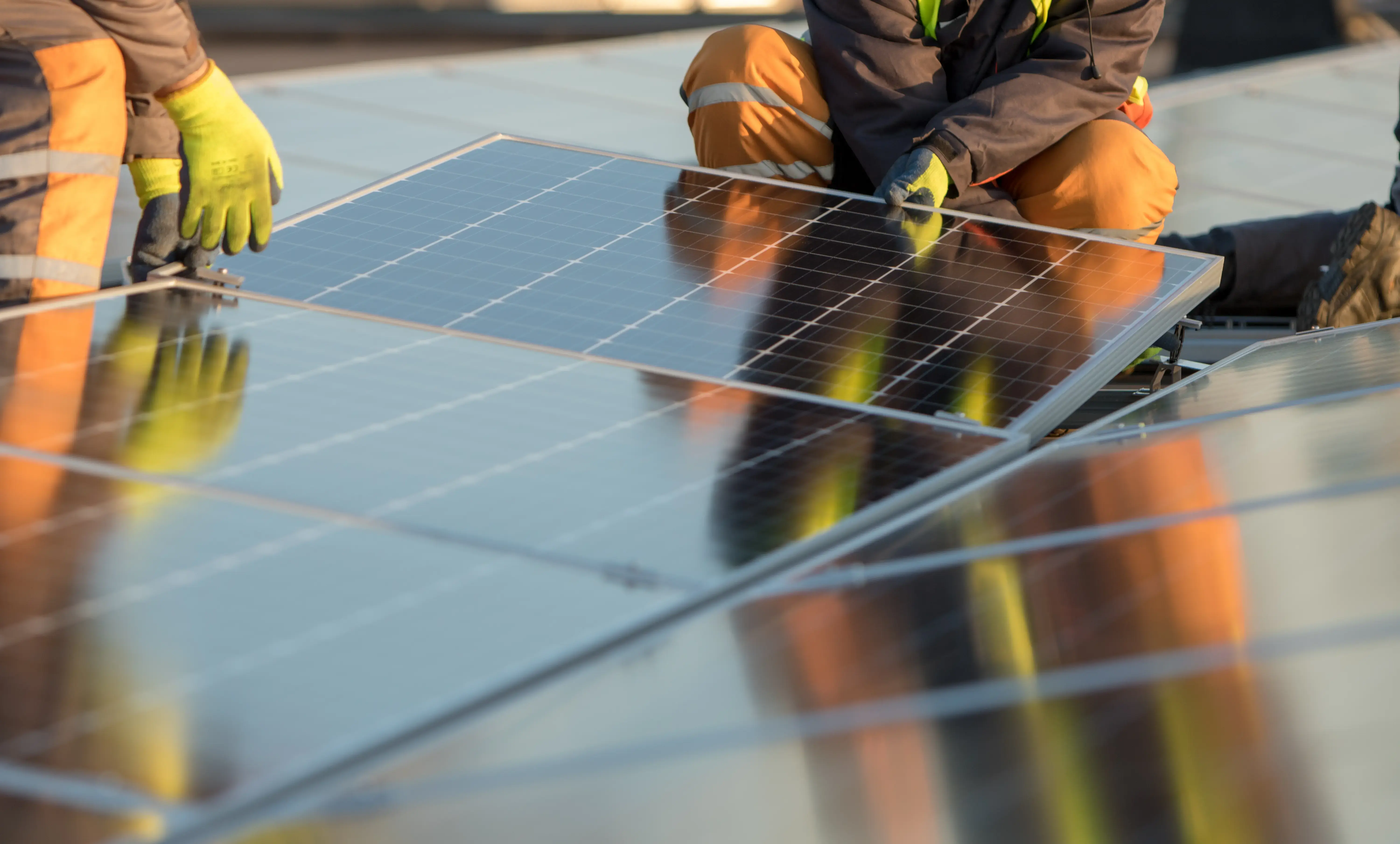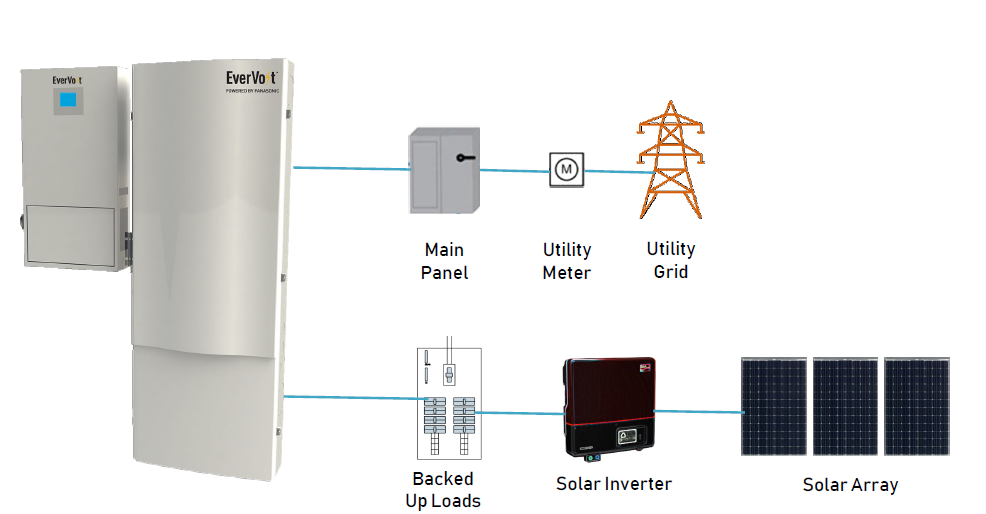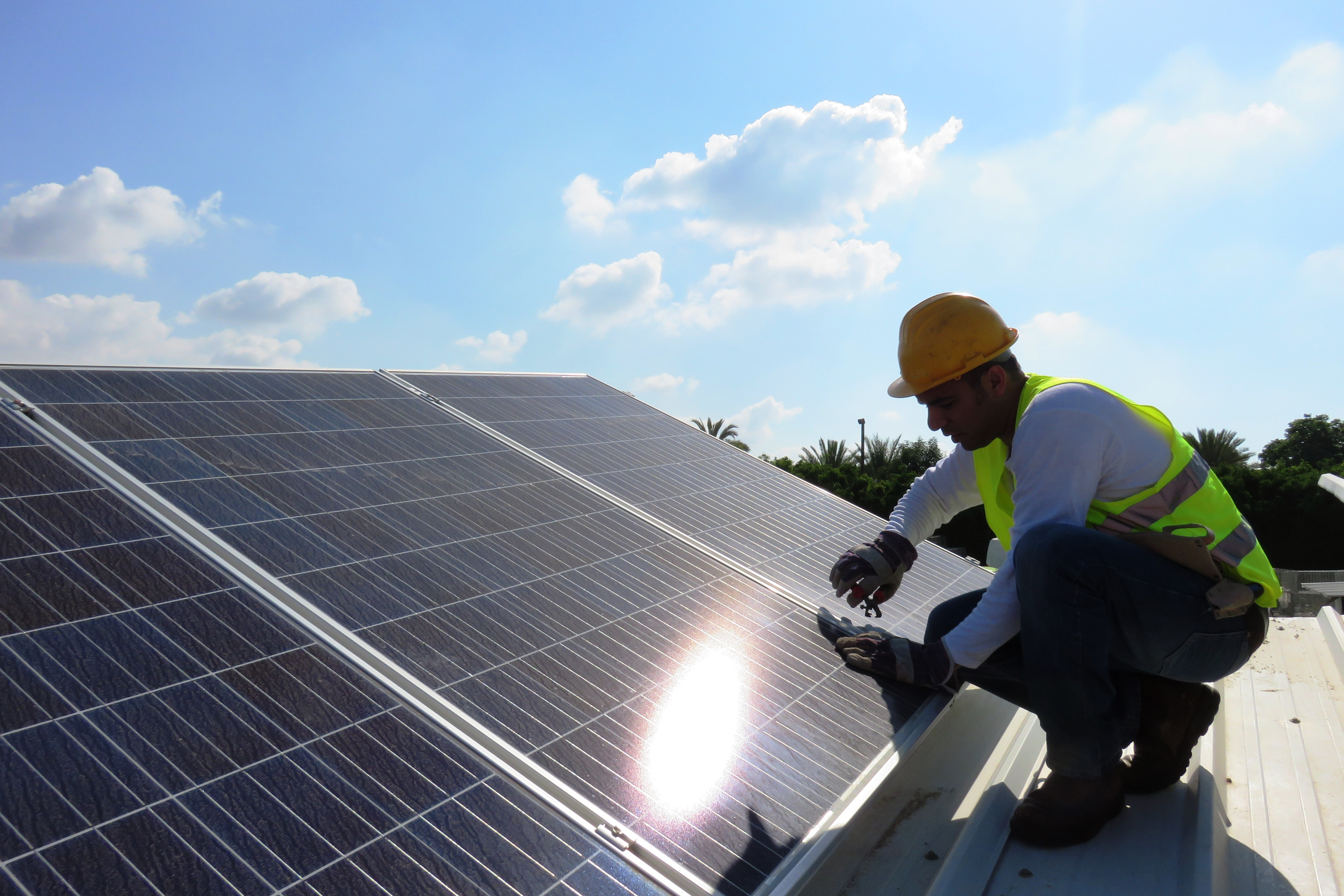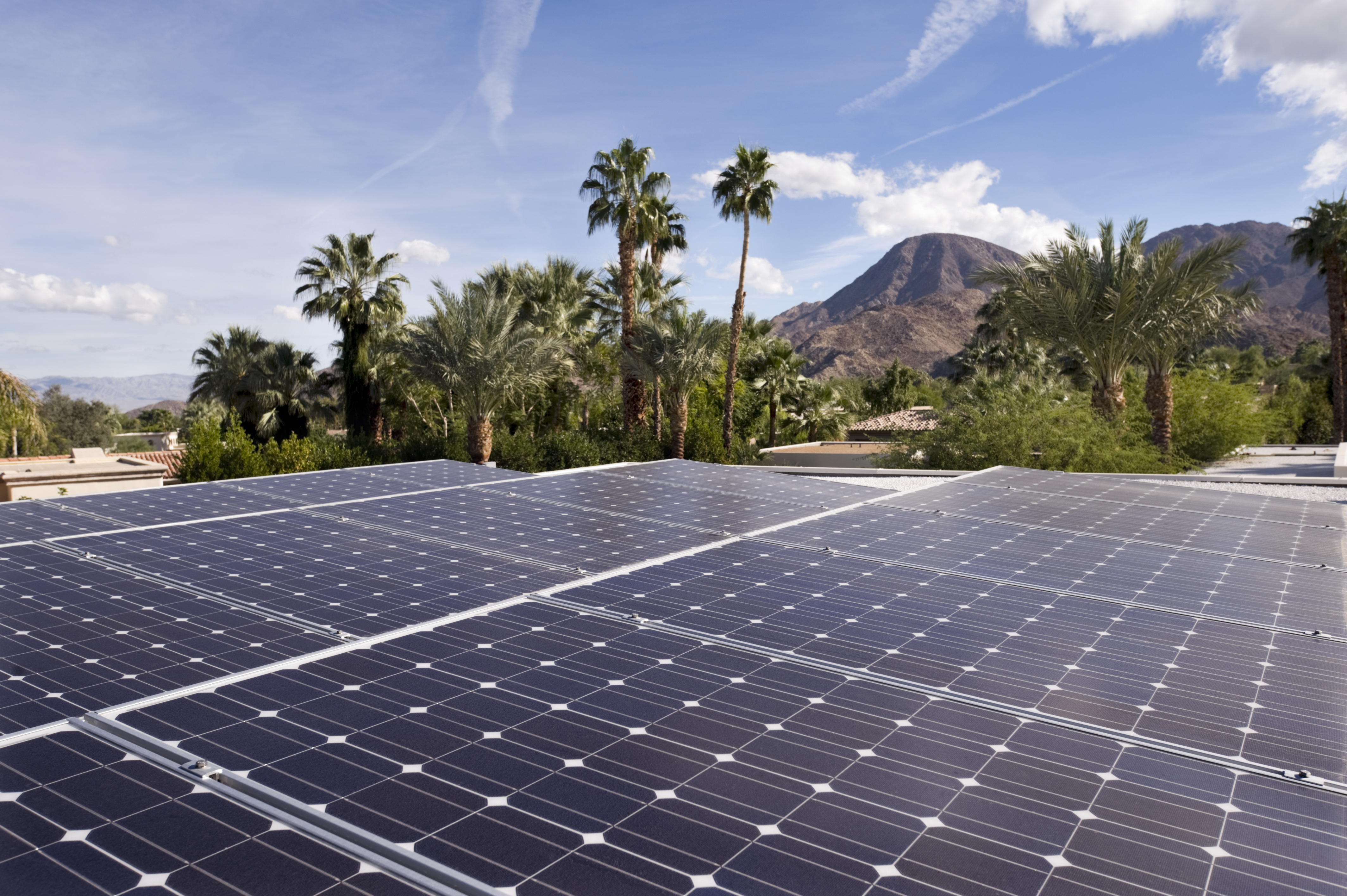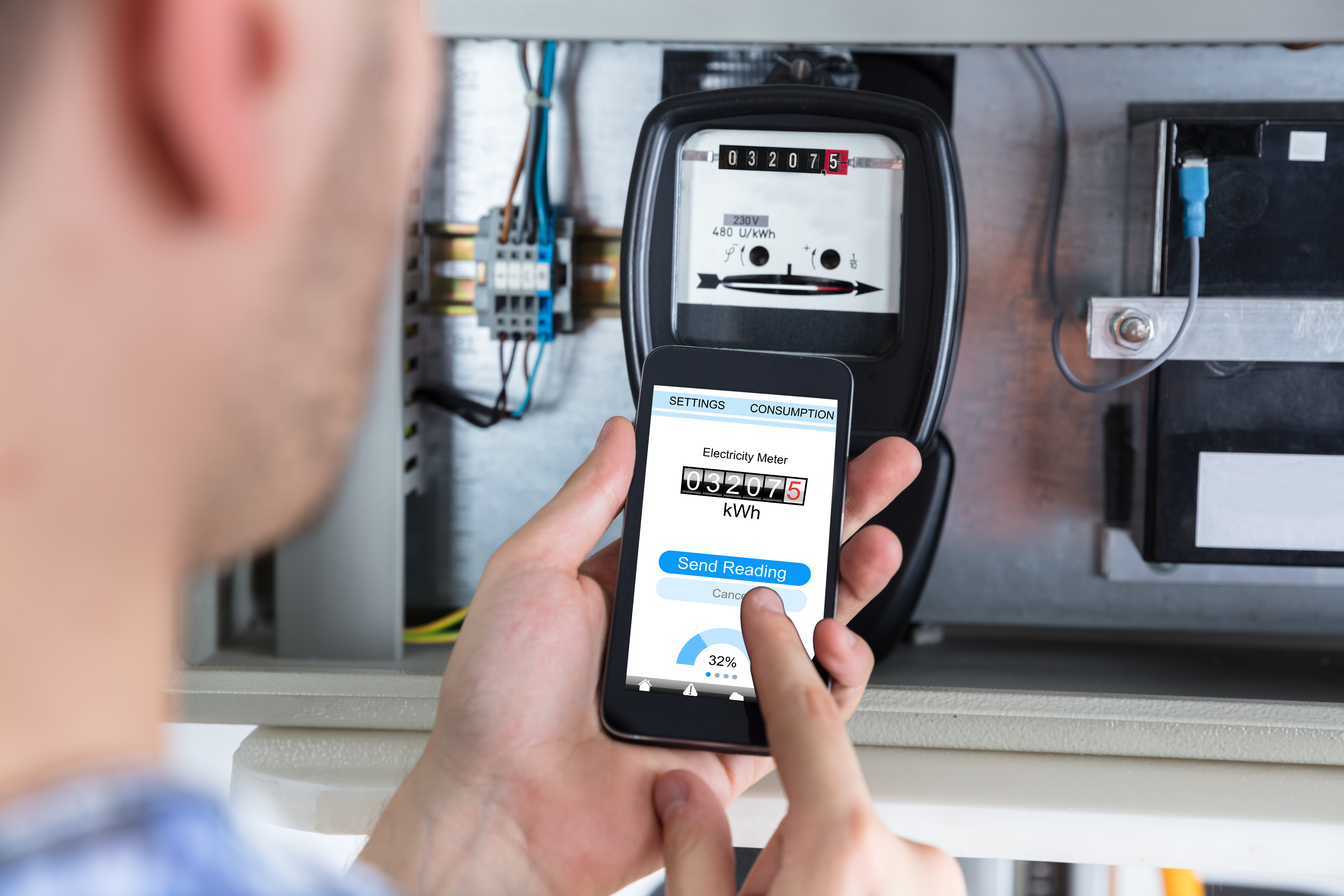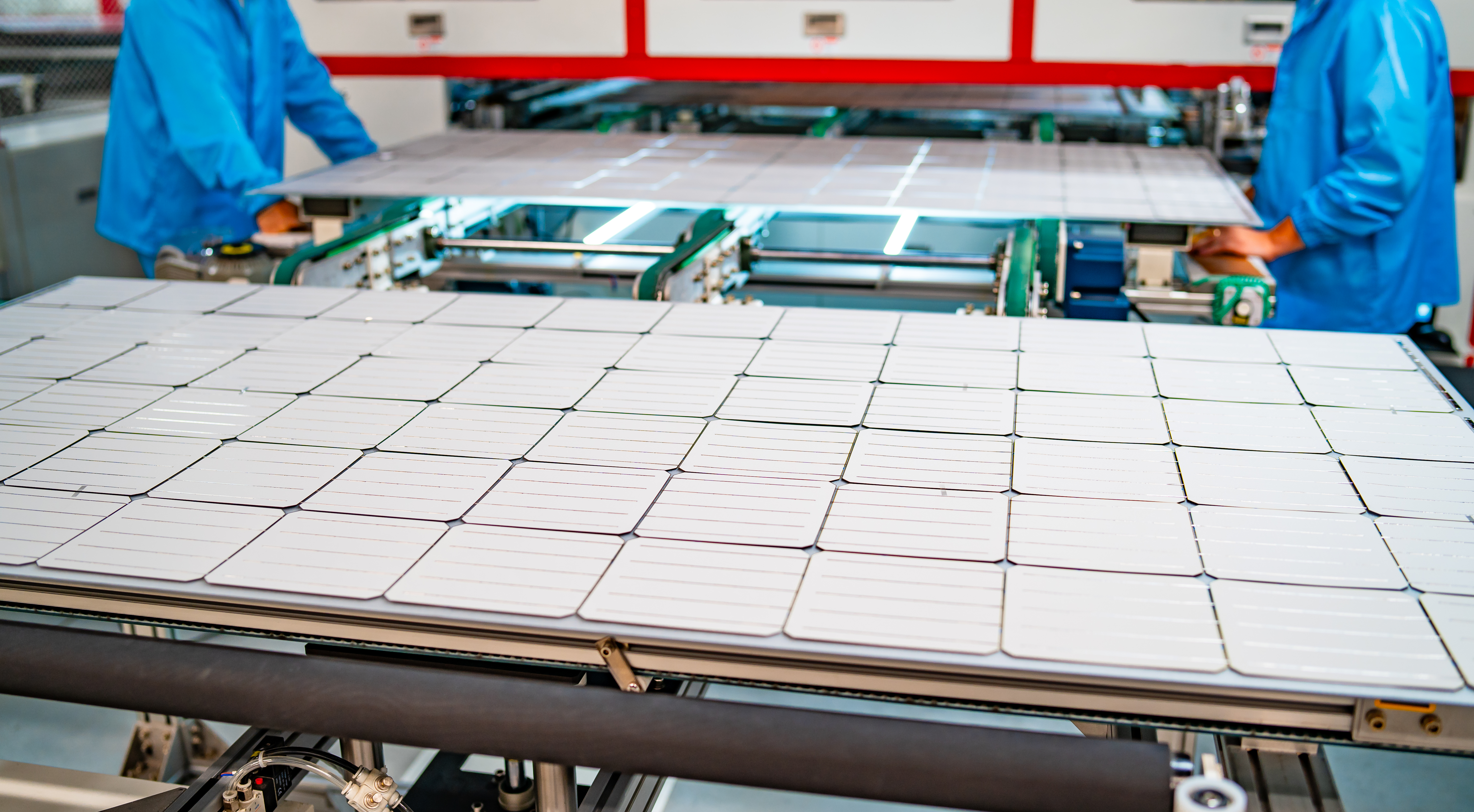Many factors go into a solar system purchase. This in-depth guide covers key points about installing solar to help homeowners ask the right questions and make an informed decision. Considering the switch to solar but not sure where to start? Get all your questions answered with a free consultation and quote from an authorized Panasonic installer.
A solar panel system can be an excellent option for saving money – and helping save the planet. But these solar systems can also be complicated to understand, and many solar companies may try to take advantage of that confusion to push higher prices on customers.
Taking a few minutes to learn more about solar energy can help you avoid these traps and know what to look for and which questions to ask when comparing costs and looking for the best deal.
How Solar Energy Works
The most common solar energy system utilizes something called photovoltaics (PV). In these systems, energy from sunlight is absorbed by PV cells within the solar panels. The energy is collected as a direct current electrical charge. Wiring within the PV cells then converts this to the more usable alternating current, which is the type of electricity that lights your house and charges your phone.
Another popular solar panel system is a concentrating solar-thermal power (CSP) system. Rather than collecting and transforming energy in PV cells, these systems use mirrors to reflect and then concentrate light onto receivers that convert the energy into heat. This thermal energy can then be used right away to create electricity or stored for later use.
System Integration
Either system is incomplete without something called system integration. This is the piece of the solar system puzzle that connects solar energy systems to the existing electrical grid.
While most people think going solar means going “off the grid,” this isn’t usually the case. Your solar energy system will likely instead share a symbiotic relationship with the existing power grid: taking from it in times of need and giving it back excess solar energy in times of surplus.
Photo courtesy of Panasonic Eco Systems
Benefits of Going Solar
There are several benefits to going solar, from saving money to strengthening the electrical grid.
Cost of Savings
How much money you can save by going solar depends on many factors, including:
- The cost of installation
- Your current electricity bill
- Where you’re located
- The changing rate of kilowatt-hours
- Potential tax benefits or other government programs or incentives
Still, if you live in an area with a high energy rate, a lot of sunlight, and you can afford the initial investment, solar panel installation may pay for itself many times over.
Again, estimates vary – and should be individually tailored – but some websites recently put the average savings at around $1,500 per household per year.
Resale Value of Home
Whether installing solar panels can increase home value is another individual estimation and is typically geographically sensitive. But, in this case, the answer seems to be yes more often than not.
A recent study conducted by the real estate website Zillow found that homes with solar panels sell, on average, for 4.1% more than homes without solar energy systems. And another study – albeit one from 2013 – reported that solar panel systems could increase a home’s resale value by an average of $5,911 for each kilowatt-hour of solar power the system can generate.
Using the numbers from the older study, that works out to a resale increase of $59,110 for a 10-kilowatt-hour system, which costs, on average, around $20,000 to install.
Good for the Environment
Solar panels don’t produce any type of pollution or greenhouse gasses. Instead, they create electricity that is clean, renewable, and emission-free.
Solar power can also positively affect the environment by reducing or replacing other, more harmful energy sources. And a solar panel system can also work to reduce demand for fossil fuels and shrink your carbon footprint.
Good for the Grid
Even if going solar doesn’t exactly mean going off the grid, this isn’t necessarily bad.
Staying connected to the grid means your home can continue to draw power from it, especially when your panels won’t generate enough power, such as at night or on cloudy days.
But the process can also work in reverse. If your solar panels generate a surplus of electricity, they can send that power back into the grid, which can help send that power to places that need it and save you even more money.
Once you’re ready to go solar, find affordable installation in your area by comparing quotes from top-rated installers.
What to Consider Before Getting Solar
It may seem like a no-brainer to opt for a solar system, but there are several important factors to consider before making a decision.
Roof Shape
While most roofs allow for solar panel installation, the shape of your roof may impact the number of panels you can install.
Generally, there are three shapes of roof that solar companies say work best for a solar installer:
- Gable roofs: Gable roofs include two flat, rectangular sides that meet at a central point. The shape of these roofs is the best for solar panel installation, particularly for installing the most amount of solar panels, and nearly all solar companies will be able to work on this roof shape.
- Hip roofs: Hip roofs are a classic pyramid shape with a shared central point and slopes on four sides. They are an optimal shape to capture the sun throughout its daily journey across the sky, though the tapered sides typically limit the number of solar panels that can be installed.
- Flat roofs: Though more frequently found on commercial buildings than residential ones, this roof shape offers the most flexibility for a solar installer. Panels can be placed in any direction to capture the most sun possible, with the roof’s shape also typically making for a more straightforward installment process.
If you don’t recognize your roof shape here, don’t despair. Many solar companies will work with you to fit at least some solar panels on your roof. Still, it’s essential to do your research and call around to see how your particular roof shape will impact your solar system installment.
Roof Quality & Material
Another often-overlooked factor for installing solar panels is the quality and material of your roof. Most solar companies will have their specialists inspect your roof before an installation.
Generally, it’s advised that a roof that’s 20 years old or older should be replaced before making a solar installation.
Several different common roof materials may offer additional advantages or disadvantages for a solar installer:
- Asphalt shingles: The most common material used on residential rooftops, the flexibility and durability of these shingles work well for solar panel installation. However, if your shingles are lifting or curling, you may need to replace them before installing solar panels.
- Tile roofs: Tile itself is not flexible nor soft enough to support the bolts and other equipment that must be drilled into the roof. Instead, solar installers must remove the tile during the mounting process. Still, the tiles that remain are fireproof — a huge plus when it comes to solar panels — and can help improve air circulation, cooling the building and relieving the heat-generating panels.
- Metal roofs: The most compatible roof material for certain types of solar panels, metal roofs typically make for easier installations. These types of roofs also perform well in high winds, which can work to protect a solar panel installation.
Again, there are many different types of roof materials. If you don’t see yours on this list, it doesn’t mean a solar panel installation isn’t possible. But you should discuss this point with any solar company you consult with.
Where You Live
Geographic location is another aspect that should be considered when thinking of solar power. It’s a sad fact that every place in the world simply does not get the same share of sun.
While sunnier locations are obviously best for generating more solar power, it doesn’t mean that seasonal or cloudier places are entirely unmanageable. It’s just important to keep in mind that this natural phenomenon will impact the amount of energy and electricity your solar panels will be able to generate.
Your Long Term Plans
Solar panels are a significant investment, which may take some time to bear fruit. Some estimates have the average amount of time for a return on investment due to energy savings between seven and 10 years. It also takes around 10 years, on average, to pay off a solar system installation.
If saving money was a big reason for getting solar panels for your home, you may want to consider these numbers before making plans to move.
And the presence of the system itself could also come into play.
It may get complicated if you lease your solar energy system but want to leave your home before the contract is up. Would-be home buyers would potentially be on the hook for taking over the lease, making selling a home more difficult. Otherwise, you’ll have to pay to have the panels removed or pay to break the contract.
Solar Panel Costs
There are many factors and considerations that create the ultimate cost – and potential savings – of a solar system.
Leasing vs. Buying
An advantage of leasing is having the system installed for little-to-no money down. This allows you to begin reaping potential savings on your utility bills right away. However, keep in mind that you’ll still need to make payments on the system throughout the term of your contract, which lasts, on average, around 20 years. This typically means paying more for the system over time than you would’ve if you bought it up-front.
Still, leasing solar panels also means that a third party will handle any maintenance of the panels or system. This is because you don’t own the panels; the third party does, which is often considered another drawback to leasing.
On the other hand, purchasing a solar energy system up-front comes with all the up-front costs, which typically range anywhere from $10,000-$20,000. Most people will pay for the system in installments, though this still takes upwards of 10 years on average to pay off.
However, buying will make you eligible for the various solar energy rebates and incentives, which could offset some of these costs. And long term, this option usually ends up costing less. If you decide to move, however, and the new homeowner does not want the solar panels, you could be responsible for the cost of moving them, which could reach upwards of $8,000.
Cost of Installation
The cost of solar panel installation varies widely, depending on which solar company you work with, the type of roof you have, the type of panels you want, how many kilowatt-hours you hope to generate, and how many solar panels you want to install, among several other factors.
Still, regardless of the particulars, the cost of having a solar energy system installed in general is not a small one.
One website recently estimated the average cost of solar panel installation at $12,000, with a low range of $5,000 and a high range of $40,000. Other sites put that average estimate anywhere between $11,144 to $14,696, a calculation that includes solar tax credits.
Before making a purchase, it’s hugely important to shop around and examine the different prices offered by different companies. And remember, any good quote should include:
- Solar panel make and model
- How many panels will be installed
- Total system size, in kilowatts
- An inverter or microinverter model
- Expected electricity production in kilowatt-hours
- A satellite photo or 3-D model of your roof, with a proposed panel layout
- Information about different solar incentives you may qualify for
- Solar loan or monthly cost information
- Total system cost, before and after incentives, broken down by dollars per watt
- Information about warranties on both equipment and maintenance
Rebates and Incentives
Again, some tax rebates and incentives are available, but only for people who purchase their solar systems outright.
The most recent federal solar tax credit (guaranteed through 2022) is worth 26% of the cost of solar installation, which can be deducted directly from your federal taxes. Some states also offer solar tax credits, though these rates are more likely to change, come, and go. Check with your state’s tax department for more information.
Aside from potential solar investment tax credit, there may be additional – although likely smaller – financial incentives available. For example, some regions and utility providers will offer straight-up cash rebates for installing the system. Others provide performance-based incentives (PBIs), which pay solar producers directly for the energy they generate.
Like most aspects of installing solar panels, a little bit of investigation into the topic can go a long way in yielding potentially lucrative results.
Net Metering
Another popular way to save money through solar power is with net metering.
With this program – which is not offered everywhere – utility companies will apply a credit to your bill for any surplus energy you can put back into the grid. Net metering could be an excellent option for keeping energy bills more predictable in more seasonal areas, provided the utility company allows your credits to roll over.
Utility Fees
Once again, going solar does not mean going off the grid.
Even if you pay off your system and generate enough solar power to electrify your home, you may still see a monthly electricity bill. These charges keep you connected to the grid, even if you don’t draw any power from it.
Many building codes require all homes to be connected to the grid – as a backup system in case of failure, in the case of solar panels. And for many people, the solar energy generated by their system won’t be enough to power their entire home every month. In these cases, homes connected to the grid will still be able to draw power from it.
Total Cost of an Entire Solar Energy System
Calculating a total price can get confusing.
A good place to start is considering how much energy you regularly use every month. This will help you determine the size of the solar energy system you’ll need.
Then, you’ll need to add the cost to install solar panels – again, considering factors like the type of roof you have, how many solar panels it can support, and the type of solar panels you want
Make sure to keep in mind any potential incentives or rebates and the effect they may make on the total price. And to get a more accurate picture of how much money you’ll need to pay – and could receive – for kilowatt-hours, it’s also helpful to look into current government trade policies and tariffs, which often affect these numbers.
With all of this in mind, the final step toward calculating cost is the age-old art of shopping around.
Compare quotes from top solar installation companies in your area to find an affordable solution for you.
Types of Solar Panels
There are three major types of solar panels, which all carry their advantages and disadvantages and may be suggested for your solar energy system.
Polycrystalline
Since these panels use several silicon fragments to create their square mold – and therefore, cut down on silicon waste – they’re typically less expensive. Still, that construction also makes them worse when it comes to energy efficiency and the physical space they take up. These panels are also worse in high-temperature areas due to lower heat tolerance.
Monocrystalline
Made from a pure silicon crystal cut into several wafers, this type of solar panel is considered the most space-efficient and longest-lasting. But that convenience comes at a cost, with monocrystalline panels typically more expensive than others.
Thin Film
These finely-layered solar panels have several benefits, including flexibility and the overall lightness that makes it easy to install solar panels like this. They also come in many different sizes, making them a better solution for oddly-shaped roofs. But overall, thin-film solar panels are less efficient than either of the silicone panel types.
How to Track Energy Savings After You Go Solar
Once you install your solar system, you’ll likely want to track its effectiveness at generating energy and saving you money. Happily, there are several routes you can take to help you keep tabs on your investment.
The most common way to track your energy usage – and savings – is through your monthly utility bill. In cases where net metering is possible, your electricity bill will come with monthly totals, including how much energy was sold back into the grid and how much money you were paid for the contribution.
Still, many modern residential solar systems allow users to track their numbers in real-time. “Smart” solar panels will allow you to monitor your system directly, online or through an app, including keeping an eye on your production statistics and estimated savings.
FAQs
Solar panel installation is a complicated and expensive process, naturally begging many questions.
How many solar panels do I need?
This answer depends on various factors, including (but not limited to):
- The size and shape of your roof
- The condition of your roof
- How many kilowatt-hours you hope to generate
- The type of solar panel you want
For more specifics, consult with your solar company. And remember, when you’re shopping around: any good quote should include this information up-front.
Will I still need to use electricity?
Even after installing your solar energy system, you may still need to use electricity from the grid. This is primarily due to fluctuations in the weather. During darker seasons, cloudier days, or even evening hours, your solar panels will not be able to generate as much solar power.
In cases where your system fails to create enough solar energy to cover your energy usage, your home will draw energy from the power grid.
Can I install solar panels myself?
While it is technically possible to install solar panels yourself, it’s highly advised not to. The process is complicated and potentially dangerous, involving specialized equipment and knowledge. It’s highly recommended to have a team of professionals installing solar panels on your behalf.
How much power can I generate from solar?
Once again, this answer varies widely, depending on the type of solar panels you have installed, the number of solar panels you have installed, the weather where you live, and other specifics of your solar energy system.
A range of online estimates put the number at an average of between 170 to 350 watts per solar panel per hour on a sunny day. And other estimates say each solar panel is capable, on average, of generating between 500–550 kilowatt-hours per year.
This article is written by Originated Media from Miami Herald and was legally licensed via the Tribune Content Agency through the Industry Dive Content Marketplace. Please direct all licensing questions to legal@industrydive.com.
